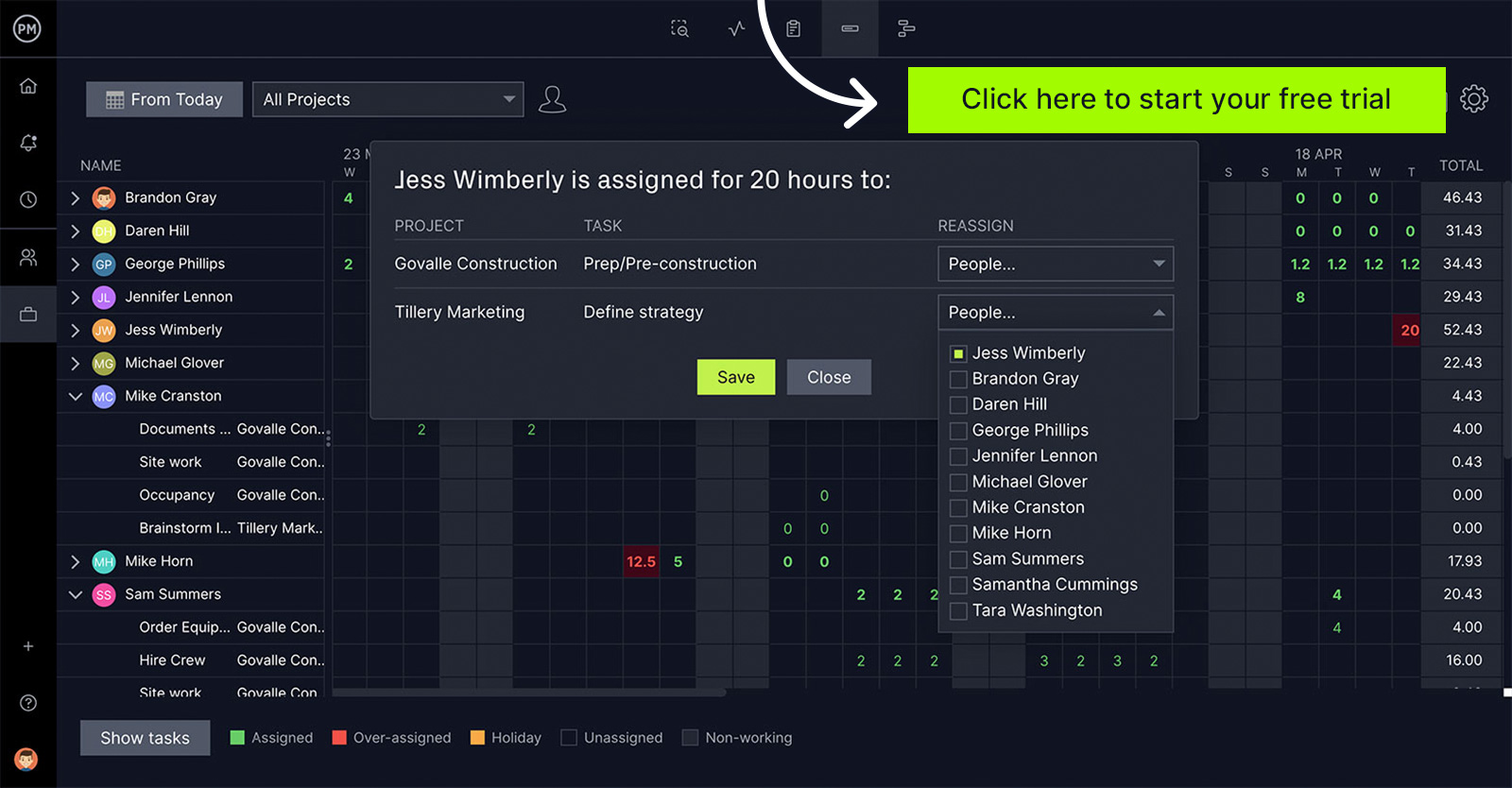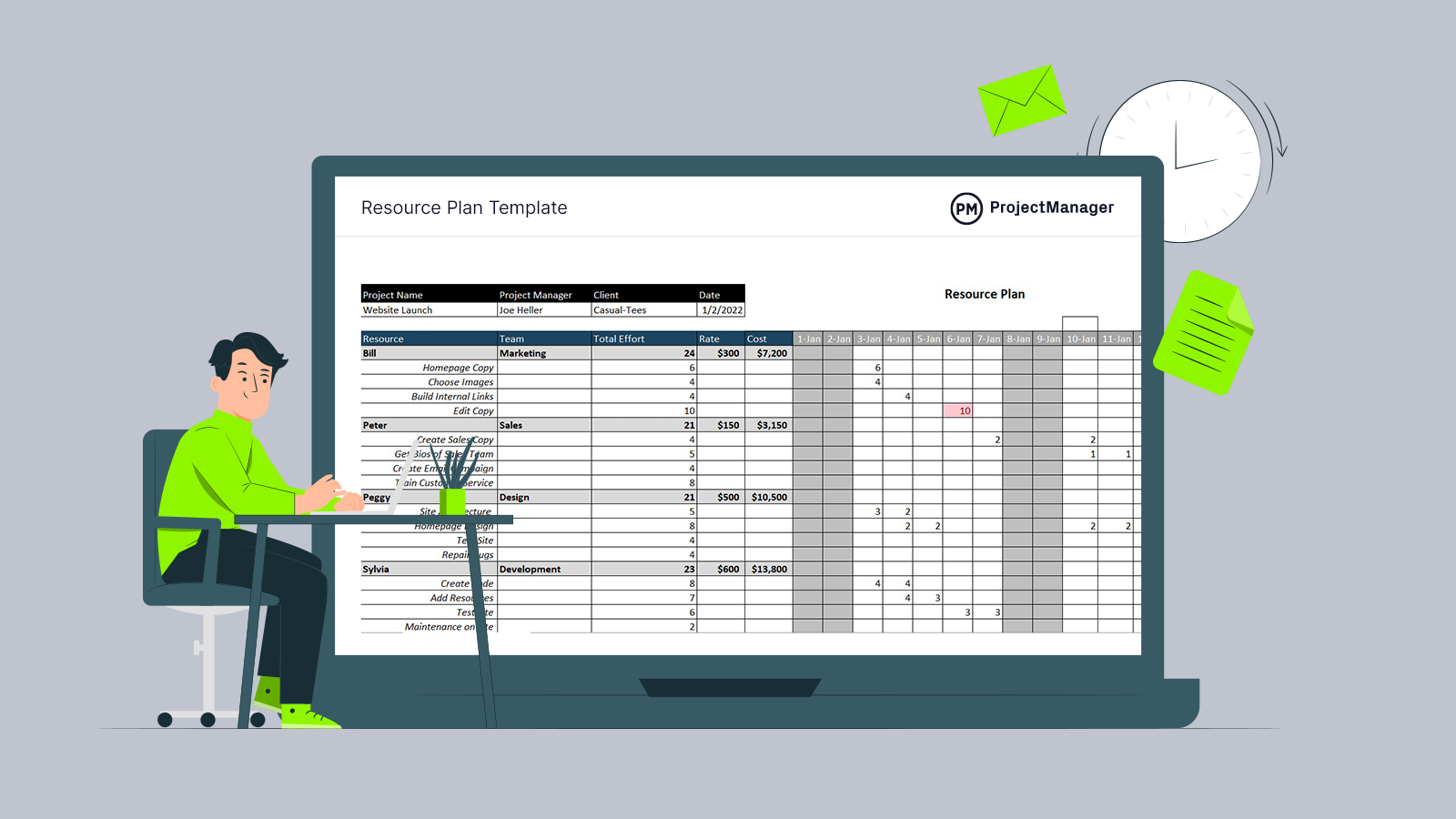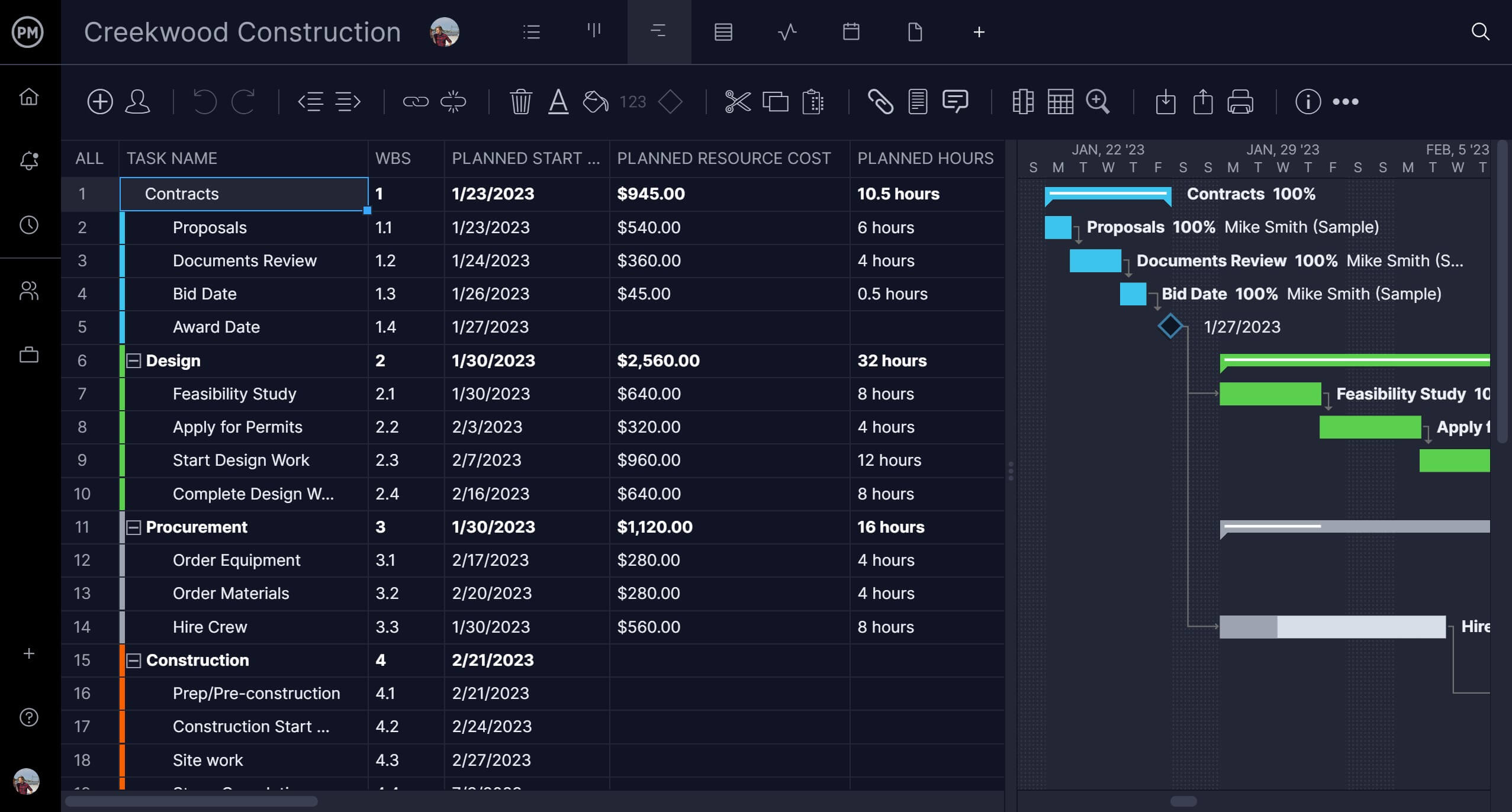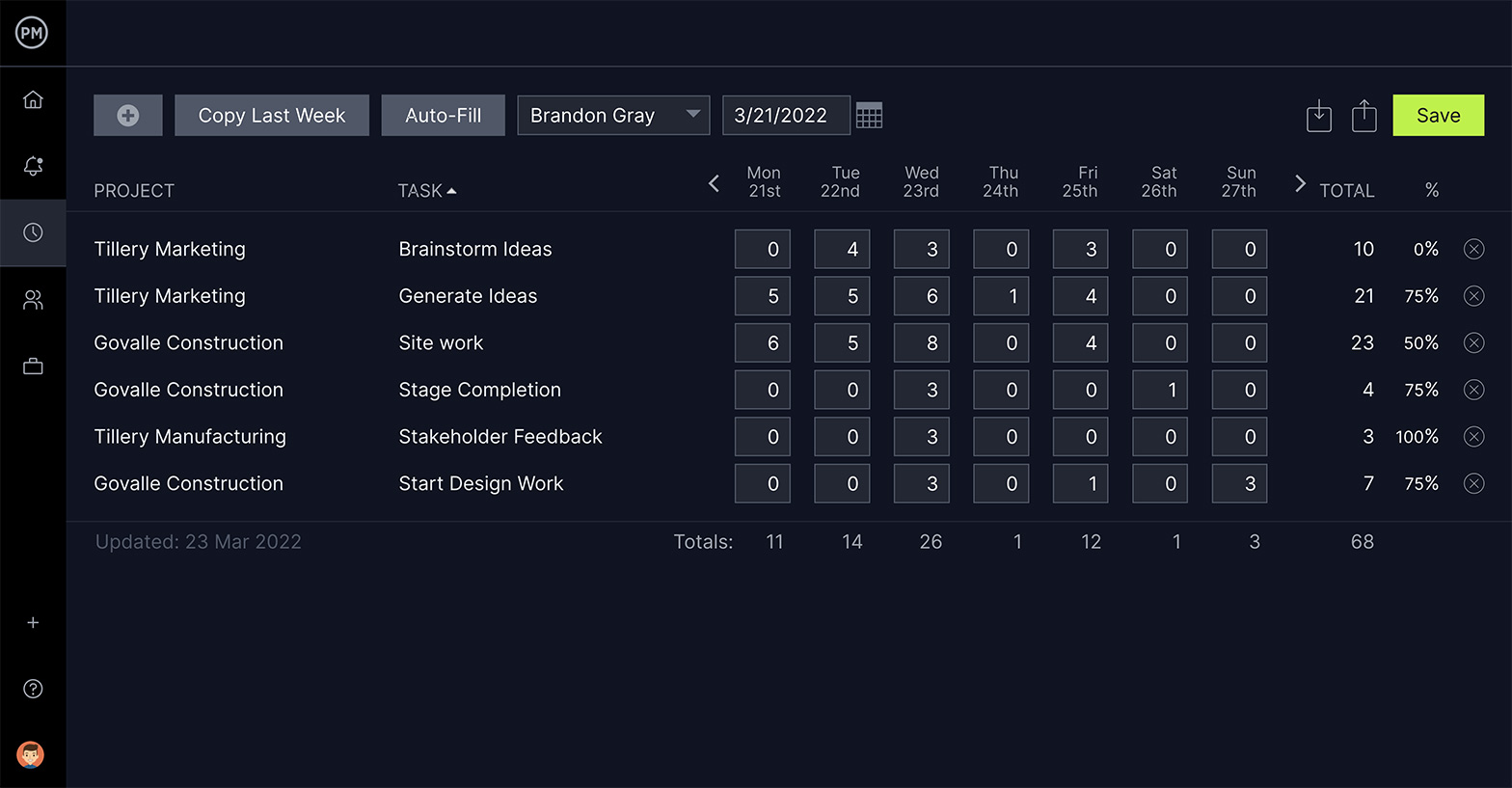Resource optimization is key to delivering a successful project. Resources, of course, are anything used to execute the project, including human resources and non-human resources. Resource management techniques keep a project on schedule.
To have the right resources at the right time, project managers need to understand resource optimization techniques. Let’s look at how resource optimization benefits the overall discipline of project management, including some best practices when managing your project and project portfolio.
What Is Resource Optimization?
Resource optimization is an umbrella term that covers a wide range of methods that are employed in project management to match project resources to the project schedule. It’s involved in the allocation and management of resources in as efficient a manner as possible. These resources can be anything from materials and equipment to labor.
For any organization to be successful and stay competitive in its industry, resource optimization is critical as it helps businesses and projects run smoothly. Knowing the available resources and scheduling them efficiently is essential for any organization to meet its strategic goals within a timeframe and budget.
Some of the ways that resource optimization works are by managing the workload of human resources by aligning project tasks with deadlines and the resources available. This is one way that an organization can stay within budget. Other resource optimization techniques include resource leveling, resource smoothing and reverse resource allocation.
Project management software helps you get the most out of your resources and manage them so resources are available when you need them. ProjectManager is award-winning project management software with resource management features that help you match your resources to your project schedule. When onboarding your team, set their availability, including PTO, vacations and global holidays, to make assigning simple. Then toggle to the color-coded workload chart and easily see who’s overallocated. Balance the workload right from that chart to keep teams working more productively. Get started with ProjectManager today for free.

Why Is Resource Optimization Important In Project Management?
Resource optimization is important in project management because it helps projects increase productivity and performance. That means that project schedules can be met and project budgets are kept to. Stakeholders are always looking at progress to make sure you’re meeting their expectations for the project, which includes meeting milestones and not overspending.
Another issue in project management is team morale. If your team is unhappy, they’re not going to work well together or be as productive as possible, which will negatively impact your timeline and budget. One way to keep teams happy is not overworking them, but keeping them allocated to capacity. This allows project managers to get the most out of their team without burning them out, which not only affects the project but employee retention.
When planning a project, project managers will look for the critical path to know which tasks must be completed in order to deliver the project successfully. Knowing the critical path leads to better task prioritization. Resource optimization helps project managers ensure they have the resources needed to complete these critical tasks without having to make adjustments to their schedule or budget.

Get your free
Resource Planning Template
Use this free Resource Planning Template for Excel to manage your projects better.
Resource Optimization Techniques
We’ve already mentioned three of the more common resource optimization techniques: resource leveling, resource smoothing and reverse resource allocation. Each is important and worth defining and providing more detail to understand how they work.
Resource Leveling
Resource leveling is when the start date and finish date are adjusted to allow a project to finish with the resources it has. This helps to find a balance between the demand and availability of a resource and avoids burning out your team. Project managers use this to allocate tasks with the proper resources, such as a team member who’s qualified to do that particular job.
This helps with resource usage and reduces deficits while increasing the efficiency of a project’s resources. It can help avoid over-allocation and helps to deliver quality outputs. However, it can result in delaying other projects, overspending your budget and may require that you allocate extra resources.
Resource Smoothing
Resource smoothing is used when dealing with time constraints. Also called time-constrained scheduling, resource smoothing keeps requirements within the budget and avoids using more resources than allocated for the project. To do this, one must have access to the workload of human resources. This helps with delivering on time in a cost-effective manner but requires prioritizing some tasks and delaying others.
Reverse Resource Allocation
Reverse resource allocation starts with your last or most critical task and works backward from your schedule, which is where it gets its name. You’ll want to use this resource optimization technique when there’s a fixed deadline or critical tasks must happen on a particular date. This allows you to determine the start dates for the resources needed.
Resource Planning Template
Our resource planning template helps you identify the human resources that are needed to complete a project. It allows you to list down your team members, the tasks they’re responsible, their estimated work hours for and the hourly rate of each employee. With this information, you can estimate your project labor costs and implement resource optimization techniques.

Benefits of Effective Resource Optimization
Managing resources is always preferable to not doing so, but there are specific benefits associated with effective resource optimization. For one, it helps with resource scheduling so you have resources with the right skill sets for the tasks. It also helps with demand forecasting by responding quickly to changing customer demand.
Effective resource optimization helps project managers better schedule their human resources. Not only can this process be streamlined, but it ensures that you have the right coverage, which prevents eroding morale and reducing productivity.
Related: 15 Excel Spreadsheet Templates for Tracking Tasks, Costs and Time
There are also cost savings by balancing workload and identifying and removing resources that you’re not using. Plus, the better you know your resources, the better you can plan for future projects, schedules and budgets. Most importantly, you get transparency across your projects, which builds trust, better understanding, and, in so doing, greater success.
You’ll also get visibility into your team’s skills. Software tools such as ProjectManager provide an overview of your team’s skill sets as well as their availability. This allows project managers to preview potential team members and select those with the skill sets that’ll align with the project work ahead.
Resource Optimization Best Practices
To gain efficiency in your organization, no matter the industry you work in, you’ll want to take advantage of resource optimization. Here are a few things to consider to deliver a successful resource optimization strategy.
1. Measure Your Resource Capacity
To properly schedule resources you first need to identify them. The allocation process has to begin with knowing the resources that are available to be allocated and then making sure that none of them are over-allocated beyond their capacity. This requires making an accurate estimate of your resources prior to the project. Then, if necessary, the project manager can request further resources to fill in the holes in their resource plan or prepare for possible shortages or excesses.
2. Track Resource Utilization
Resource optimization is only the first step. To maintain resource utilization, you need to monitor your resources, preferably in real time. This can be done with a variety of project management tools, such as dashboards, reports and other resource management features. They capture resource use and give project managers a view into their actual performance, which they can then compare to their planned performance.
3. Use Resource Management Software
Most of these best practices for resource optimization require the use of resource management software. You’ll want an online one that can deliver real-time data to help you make more insightful decisions as you manage your resources. It should also have reporting capabilities that show you workload, variance and more, as well as a dashboard to provide a high-level view of progress and performance when you need it.
How ProjectManager Helps With Resource Optimization
ProjectManager is award-winning project management software that provides project managers with real-time data and connects teams across departments or time zones. Our software has resource management features that help you onboard teams and track their workload in real time. You can also monitor workload, cost, time and more on real-time dashboards that illustrate these metrics in easy-to-read graphs and charts whenever you need a high-level view of the project. There’s no time-consuming configuration as with lightweight tools. It’s plug-and-play.
Measure Labor Costs With Timesheets
Managing your team’s timesheets can help you track labor costs. Teams can log hours anywhere, either with an internet connection or our mobile app. As those hours are updated throughout the software, the timesheets automatically update. You can add tasks from different projects, copy the timesheet from the week before if you’re doing the same tasks and even auto-fill timesheets as needed. Our timesheets are secure and, once submitted to an admin for approval, are locked and cannot be changed. You can generate a timesheet report to see what percentage of the team member’s tasks are completed to know if the project is on track.

Schedule Resources With Multiple Planning Views
Of course, before you can monitor your labor costs you have to plan them. Our software has multiple project views, which means you can schedule your project on powerful Gantt charts that link all four task dependencies to avoid delays and even filter for the critical path. Once you have your tasks, costs and resources planned, set a baseline to track project variance in real time. The Gantt plan can be easily shared and used across multiple project views. Teams have the option of executing their work on kanban boards, task lists, calendars or a sheet view to have the tools that are more suited for their jobs.

Our software lets you plan, manage and track your resources in real time, whether they’re human resources or non-human resources. But that’s only one aspect of what our tool can do. We have task management and risk management features that help you stay productive and avoid costly delays that can take you off schedule.
ProjectManager is online project management software that helps you plan, manage and track your projects in real time. Our collaborative platform allows you to share files, comments and more anywhere and at any time. Join teams at Avis, Siemens and Nestle who already use our tool to successfully manage their projects. Get started with ProjectManager today for free.


